New Mexico is one of the most beautiful places in the U.S. Its sand dunes transport you to another time and planet. They are unique in how they shift and change daily because of the wind. Camping in the dunes is phenomenal because it’s like waking up on a strange planet that varies in appearance from day to day. The mysteries the dunes hold beneath their timeless white sand can never be discovered. In this article, we will learn amazing facts about the otherworldly sand dunes in New Mexico, those at White Sands National Park.
1. The Sand isn’t Actually Sand

The white sand is a mineral called gypsum.
©Cavan Images/iStock via Getty Images
Approximately 250 million years ago, during the Permian era, the white dunes did not exist yet. Instead, a sea covered the area that is the Tularosa Basin. The gypsum-bearing marine deposits eventually turned to stone and formed the mountain ranges of the Yeso and San Andres turned to stone. During the Laramide Orogeny, the land shifted and was raised into jagged peaks, becoming what we see today for the nearby mountain ranges.
10 million years ago, the plates stretched and fell, creating the Tularosa Basin. The change also created the Sacramento Mountains and San Andres Mountains, which were then raised along the fault lines. The Tularosa Basin is called a graben, meaning it cannot drain the water that fills it. As Lake Lucero fills with water that runs off the Andres Mountains, the water evaporates, leaving crystallized gypsum. This “sand” eventually blows off the lake floor, which creates the nearby dunes.
2. It’s the Biggest White Sand Desert in the World

All three gypsum deserts are concentrated in a small area.
©sunsinger/Shutterstock.com
There are only three gypsum deserts in the world. There are two in the Chihuahuan Desert, in Texas and Mexico, but the largest is the White Sands National Park in Alamogordo, New Mexico. This makes it even more special since it is so rare. The White Sands National Park is 227.8 square miles. The highest dunes are an amazing 60 feet tall, and in its entirety, the park consists of 4.5 billion tons of gypsum sand.
3. Camping is Severely Restricted
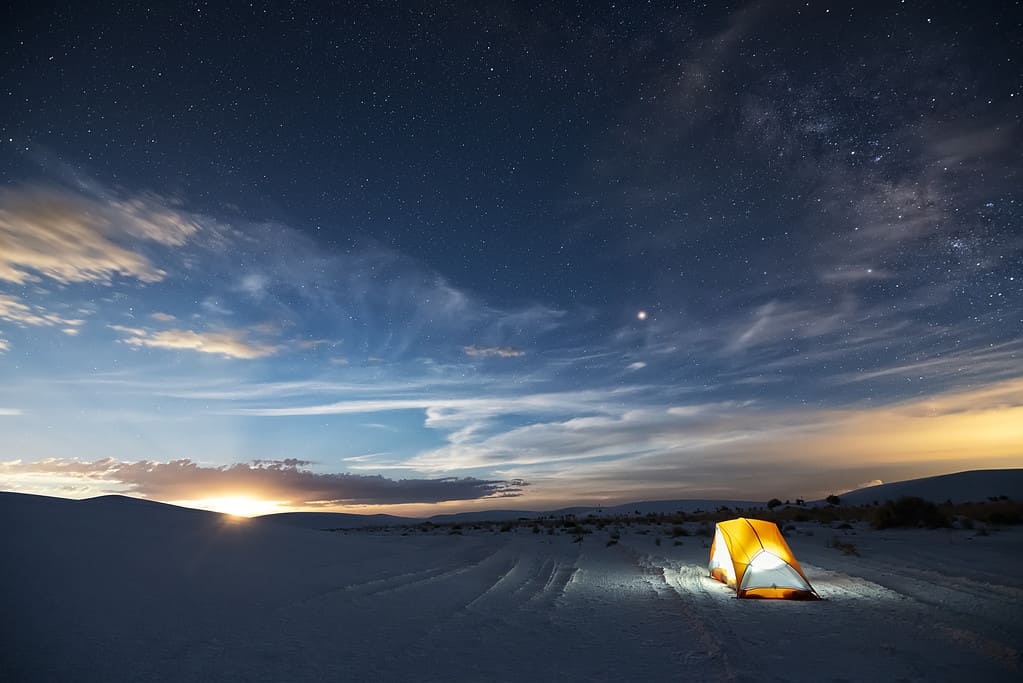
The park attracts between half and one million visitors annually.
©Aidong Ning/iStock via Getty Images
The White Sands National Park attracts many people every year. Depending upon the time of year, it can be dangerous if you do not come prepared for the potential extreme weather. It can get over 100 degrees in the summer, and the park does not offer water, food, or camping that isn’t primitive. They have a small number of primitive sites that get rented quickly. Each day, those who wish to stay a night in the park must be in line before the park opens to get a spot. There are no days or week-long rentals, and your spot is up for grabs as soon as the park opens.
4. The First Atomic Bomb was Tested Across from the Dunes

The atomic bomb released dangerous radiation at the site it detonated.
©iStock.com/RomoloTavani
In 1945, the atomic bomb was first tested 60 miles north of the park in the White Sands Missile Range. It was placed on top of a 100-foot tall steel tower, and spectators saw a 38,000-foot-high explosion of colors. The bomb left a half-mile wide and eight-foot deep crater of green fused sand in its wake. Signs warning of dangerous radiation levels were posted over a mile around the Trinity Site. The range offers visits from April through October.
5. The Natural World is Very Much Alive on the Dunes
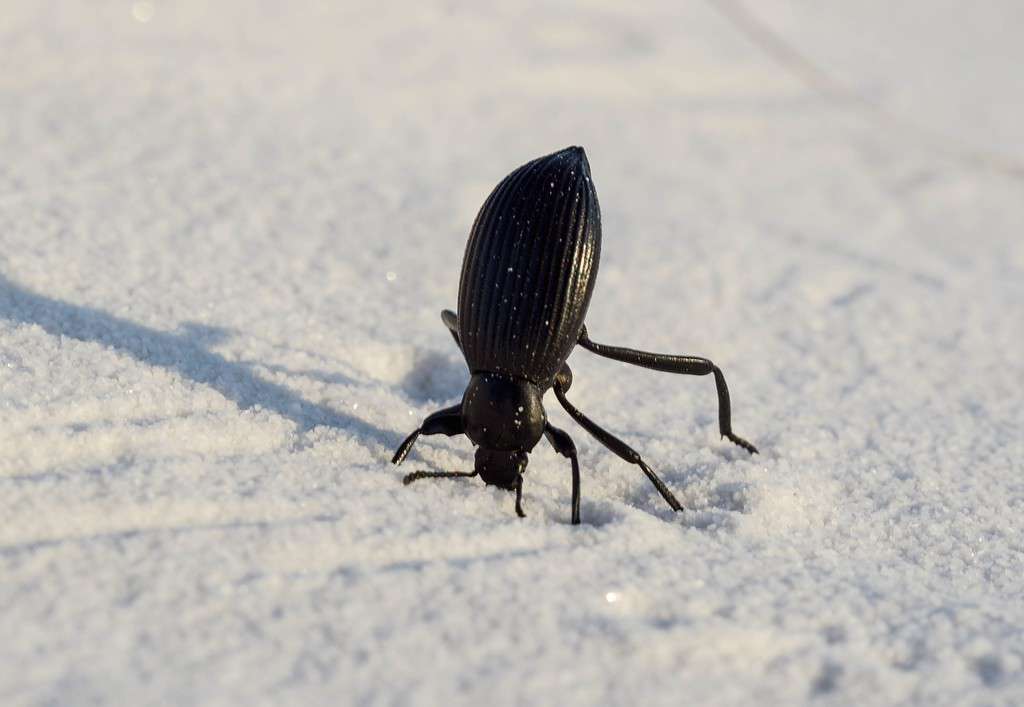
Plenty of life calls the White Sands Park home.
©makasana/iStock via Getty Images
Though it looks like a vast and empty place on a different planet, over 800 animal species live on the dunes. Much of that life is nocturnal like most are in the desert. It is fun to try to decipher what the footprints are in the untouched-by-humans morning sand.
Mammals like the Apache pocket mouse, black-tailed jackrabbit, kit fox, and Merriam’s kangaroo rat can be a delight to see. Invertebrates like the curious and friendly Apache jumping spider, darkling beetles, scorpion, and tarantula can be a delight to meet. You might even bump into some of the reptiles and amphibians that live on the white dunes, like the spadefoot toad, rattlesnake, and leopard lizard are just some you may see.
6. It’s Windy On the Dunes

The wind creates lines in the gypsum that make it look even more like an alien planet.
©makasana/iStock via Getty Images
The wind is an important ingredient in creating very fine gypsum dunes. Expect a lot of it. The winds are what lifted the gypsum grains, and as they beat against each other, they created the fine sand you see. The gypsum is actually clear but has taken on a white appearance because of the scratches covering each grain.
Another very cool part of the dunes is the intricate designs the winds make in the sands. They will shift throughout the day, often resembling tree bark or waves on the sand. This is also one reason the dunes can be dangerous. It is very easy to become disorientated when the dunes are forever shifting and moving. It can look quite different at night than it will in the morning. Always use a compass and GPS.
7. The Sledding on the Dunes is Fantastic
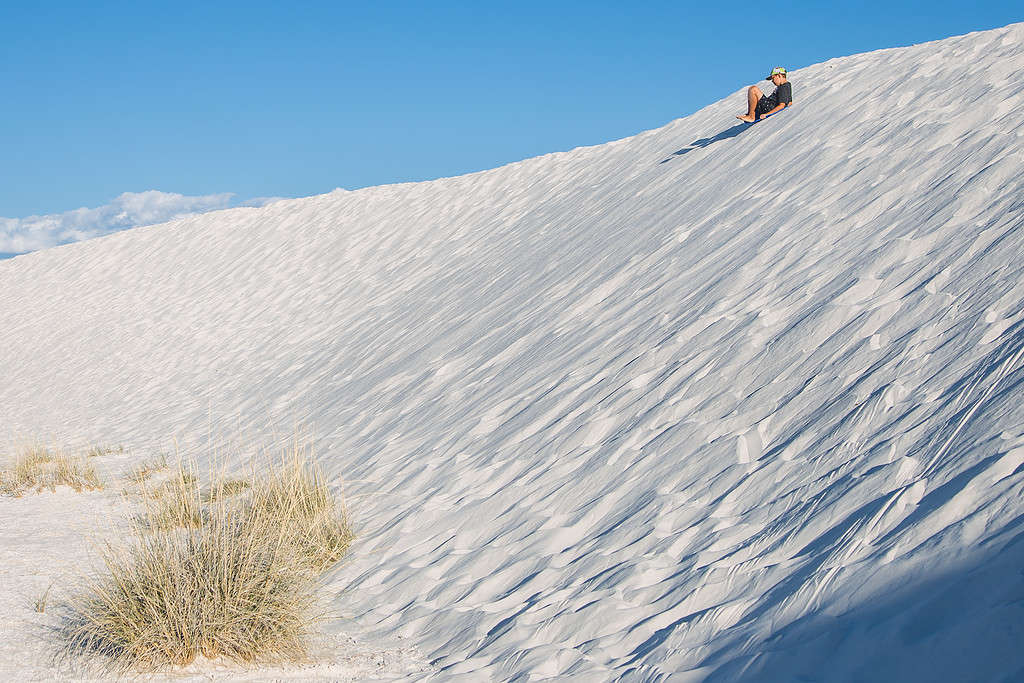
The dunes can be a great place for some exercise while sledding.
©PhotoSparks/iStock via Getty Images
It may come as a shock, but shedding on the dunes is some of the best fun you can have. It does take a special type of sled that’s been coated with wax to make it slippery on the gypsum. Since it is not slippery, icy snow, it doesn’t work exactly like typical winter sledding. Luckily, the gift shop at the front of the park sells the perfect type of sleds that have been prewaxed. Be sure to ask for pointers and tips from the staff and take pictures.
8. Tularosa Basin has Tons of History

It’s difficult to imagine the secrets of the Tularosa Basin and the surrounding area.
©gnagel/iStock via Getty Images
Mammoths, ground sloths, camels, dire wolves, and saber-toothed big cats once passed through the area. Many fossils have been uncovered, only to disappear again with the changing of the dunes.
As far as humans are concerned, the area that is now the park has hosted humans for 23,000 years. The furthest back is the Paleo Indians, then came the Archaic people, who were also the first to walk through the gypsum sands. Later, the Jornada Mogollon people left traces of the pottery they once crafted behind when they left the area. Roughly 700 years ago, the Apache people made a home here, and their first descendants are the Mescalero Apache living in the Sacramento Mountains today.
9. The Dunes Have Been Called “La Pavura Blanca”
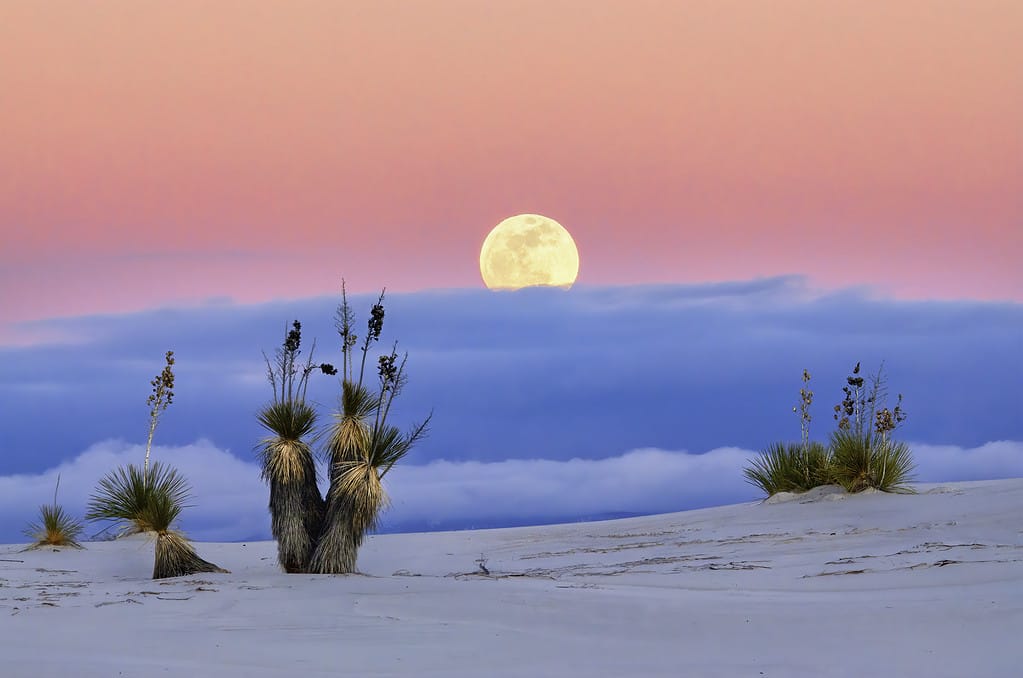
Every great place comes with even better legends.
©John Fowler from Placitas, NM, USA / CC BY 2.0 - License
The most beloved story of the white sands is the “La Pavla (Pavura) Blanca” or The White Dread. Legend says the dunes are haunted by a heartbroken woman searching for her partner. The legend began in the 16th Century when the Spanish traveled through New Mexico searching for the Seven Cities of Cibola and their riches of gold.
The woman, soon-to-be husband, and others set out through the white sands, but when the men wanted to go further, they were ambushed by Native Americans protecting their land and killed. Her partner made it back to the white sands and collapsed. He was swallowed by the shifting dunes and never seen again. People believe her ghost appears clothed in her wedding dress at fiery sunsets as eddies of sand whipped up by the winds.
10. A Huge Hot Air Balloon Festival Happens Nearby
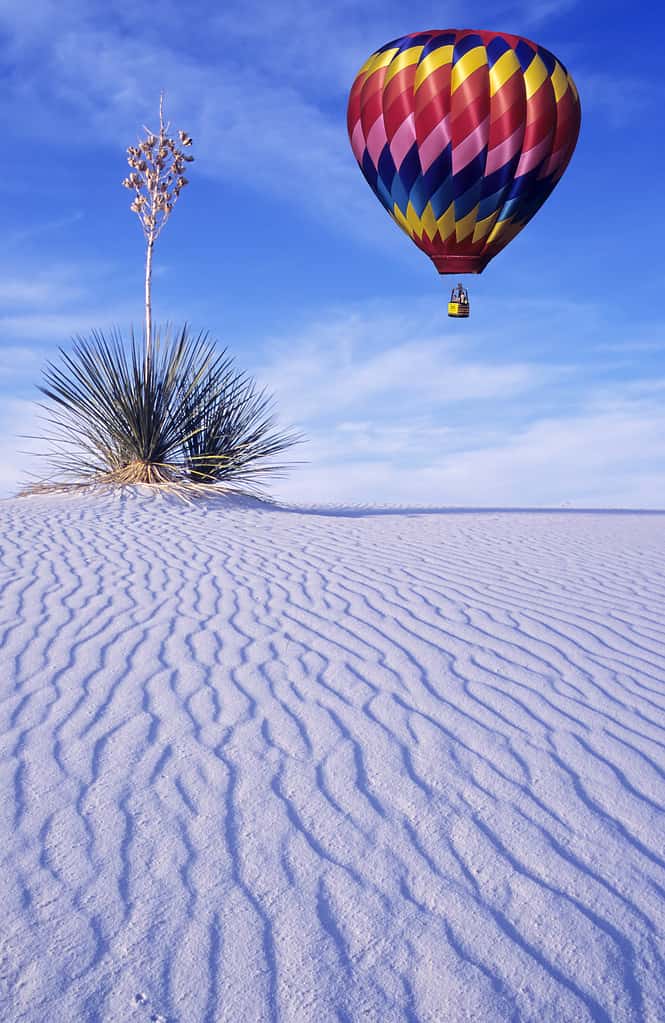
Witnessing the brightly colored balloons annually flying above the dunes is amazing.
©Douglas Knight/iStock via Getty Images
The annual White Sand Balloon & Music Festival in September is a fantastic sight to behold on the pristine ivory dunes. It is a big event but is solely dependent on the weather cooperating. Sometimes, the winds in the area are too strong. It is a family-friendly event and a really great experience for everyone.
The photo featured at the top of this post is © Murray Foubister / CC BY-SA 2.0 – License / Original
Thank you for reading! Have some feedback for us? Contact the AZ Animals editorial team.







